NATIONAL MUSEUM OF THE AMERICAN INDIAN
From a Dance Performance on the Residential School Experience to a Symposium Celebrating Native Women’s Art, Women’s History Month Matters at the National Museum of the American Indian
Most of the Native American art we see in museums, in the United States and around the world, was created by women. In many traditional tribal governments, women formed the upper council, responsible for decisions of war and peace, and women have been elected to the highest offices in 20th-century Native nations throughout the United States. In short, Women’s History Month is important to our museum. Here are highlights of programs on the calendar in Washington, D.C., and New York City throughout March 2020.
/https://tf-cmsv2-smithsonianmag-media.s3.amazonaws.com/blogging/featured/Mush_Hole_photo_2_David_Hou..png)
The majority of Native American art we see in museums, in the United States and around the world, was created by women. In many traditional tribal governments, women elders formed the upper council, responsible for decisions of war and peace. Women have been elected to the highest offices in 20th-century Native nations throughout the United States, as well. Fawn R. Sharp, president of the Quinault Indian Nation, currently serves as president of the National Congress of American Indians.
In short, Women’s History Month is important to our museum. Here are highlights of what we have on the calendar in Washington, D.C., and New York City throughout March 2020.
PERFORMING ARTS
The Mush Hole: Truth, Acknowledgement, Resilience
Saturday, March 14, at 2 p.m. in the Washington museum’s Rasmuson Theater
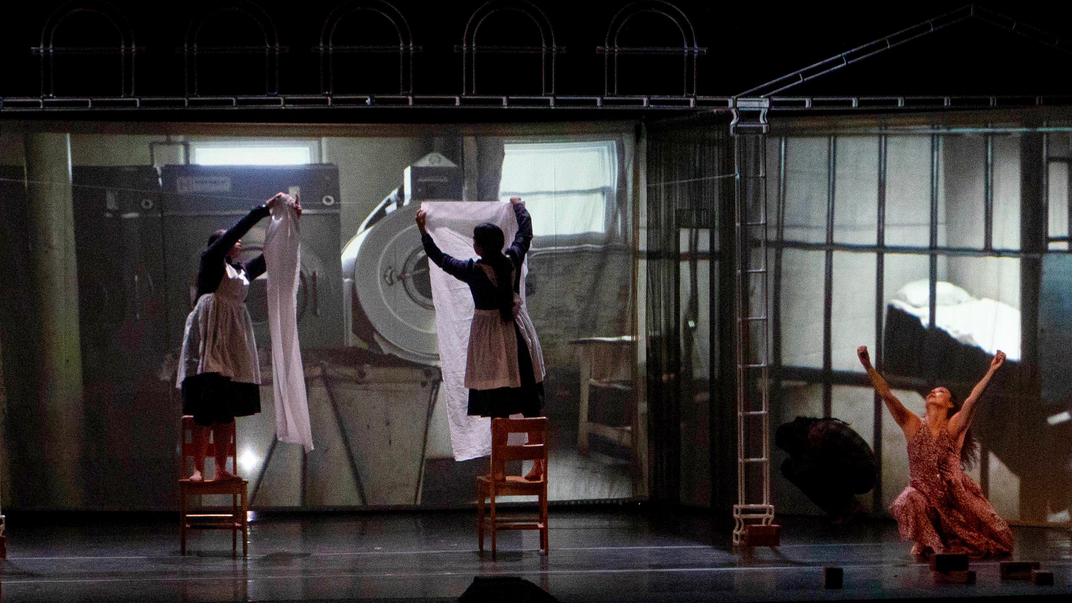
The Mush Hole is a heart-breaking work of dance theatre that moves through Canada’s residential school history with empathy and hope. Created, directed, produced by Santee Smith (Kahnyen’kehàka [Mohawk] Nation), produced on tour by Kaha:wi Dance Theatre of the Six Nations of the Grand River and Toronto, the performance reflects the realities of the Mohawk Institute Residential School experience and offers a compelling way to open dialogue and to heal.
The Mohawk Institute, also called the Mush Hole, was Canada’s oldest continuously operated residential school, the model for all the residential schools that followed. Opened in 1828 as a day school, in 1831 the institute became a boarding school for children from Six Nations and other First Nations communities in Ontario and Quebec. Until its closing in 1970, it was a key tool in the effort to assimilate First Nations children into European Christian society and to sever the continuity of First Nations culture from parent to child. It left a legacy of trauma.
Created in collaboration with Mohawk Institute Residential School survivors and using official documentation in telling the school’s history, The Mush Hole is about survival and intergenerational resilience.
Generous support provided by The Rasmuson Foundation.
Maryta de Humahuaca in Concert
Saturday, March 21, at 3 p.m. in the Washington museum’s Rasmuson Theater
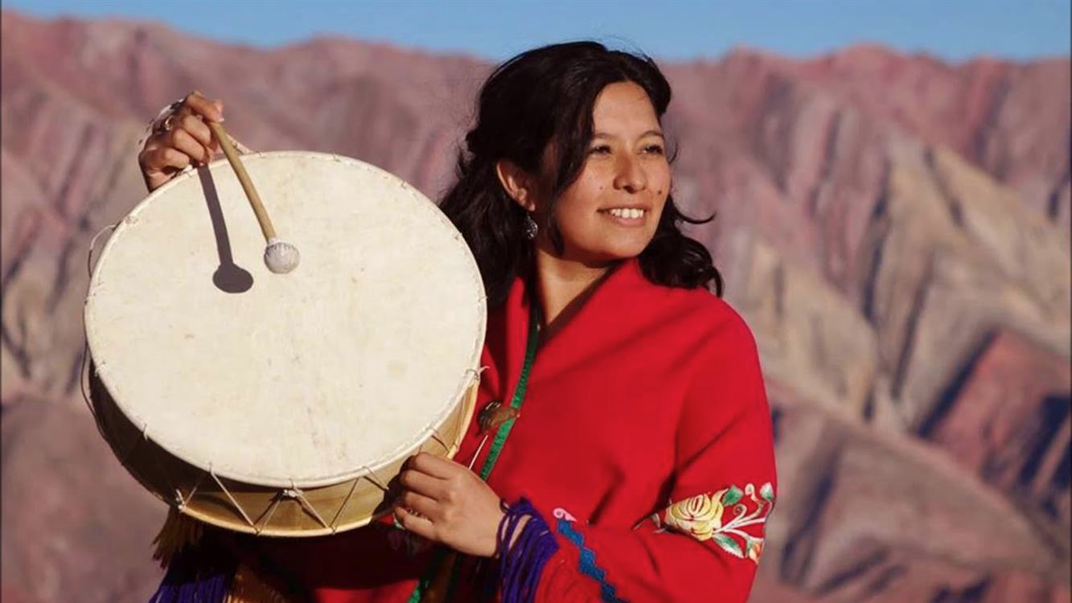
From the Argentine Altiplano, near the border with Bolivia and Chile, singer, instrumentalist, and composer Maryta de Humahuaca (Kolla) brings her fusion of contemporary and traditional Andean music.
Presented in collaboration with the Embassy of the Argentine Republic.
FESTIVAL
Through Her Eyes: Celebrating Indigenous Women of the Andes
Saturday, March 21, from 10 a.m. to 5 p.m. at the museum in Washington
This family-friendly celebration shares the stories, experiences, and perspectives of Indigenous women in the Andes. Cultural and content experts lead a series of performances, demonstrations, and hands-on activities giving visitors a window into the rich traditions and contemporary lives of Andean communities.
Julia Garcia (Quechua) demonstrates how to dress a fashionable llama. Did you know that colorful ear tassels communicate your ownership of a llama and that bells can help to find your llama in the dark? Learn how to make ear tassels and neck adornments fit for a llama caravan. Isabel Hawkins shares stories woven into Andean textiles. Learn to see cardinal direction markers, constellations, and equinox symbols that make up the patterns of some Andean weavings. Zuly Jimenez (Quechua) uses potatoes to create figures for a retablo, a small scene represented in a box-like frame.
Skilled specialists from the museum’s Collections Conservation staff share their expertise in the care of weavings. Kathleen Martin, Andrew W. Mellon Fellow in Textile Conservation, describes her research, shows sample textiles, and demonstrates the indigo dye process. Conservator Susan Heald leads hands-on demonstrations with cochineal dye and shows how the color can be shifted from orange to red to purple. Conservator Emily Kaplan shares the history of ceremonial drinking cups called qeros.
FILMS
The Body Remembers When the World Broke Open
Saturday, March 7, at 2 p.m. at the museum in New York
Directed by Elle-Máijá Tailfeathers (Blackfoot/ Sámi) and Kathleen Hepburn, The Body Remembers When the World Broke Open (2019, Canada/Norway, 105 min.) tells the story of two Indigenous women living very different lives who are brought together on the streets of Vancouver by desperate circumstances. The story of their encounter explores the complexities of motherhood, class, race, and the ongoing legacy of colonialism. A discussion with actress Violet Nelson follows the screening.
Merata: How Mum Decolonized the Screen
Saturday, March 7, at 2 p.m. in the Washington museum’s Rasmuson Theater
Merata Mita was a woman of firsts: the first Māori documentarian, the first Māori woman to write and direct a feature film on her own, a trailblazing activist who broke taboos in New Zealand by speaking openly of racism and domestic violence. Human rights activist Jesse Wente (Ojibwe, Serpent River First Nation) calls her “the spark that actually lit the fire” for Indigenous cinema. In Merata: How Mum Decolonized the Screen (2018, New Zealand, 89 min.), Merata’s son Heperi (Hepi) Mita tells the story of her inspirational life and legacy through a unique lens.
This screening is part of the One Woman One Vote 2020 Festival. Bringing together a coalition of women in film and media, the festival embraces both history and contemporary issues that make a difference for all women today.
SYMPOSIA AND CURATOR TALKS
Marking Space: Abstraction and Place
Thursday, March 5, at 6:30 p.m. at the museum in New York
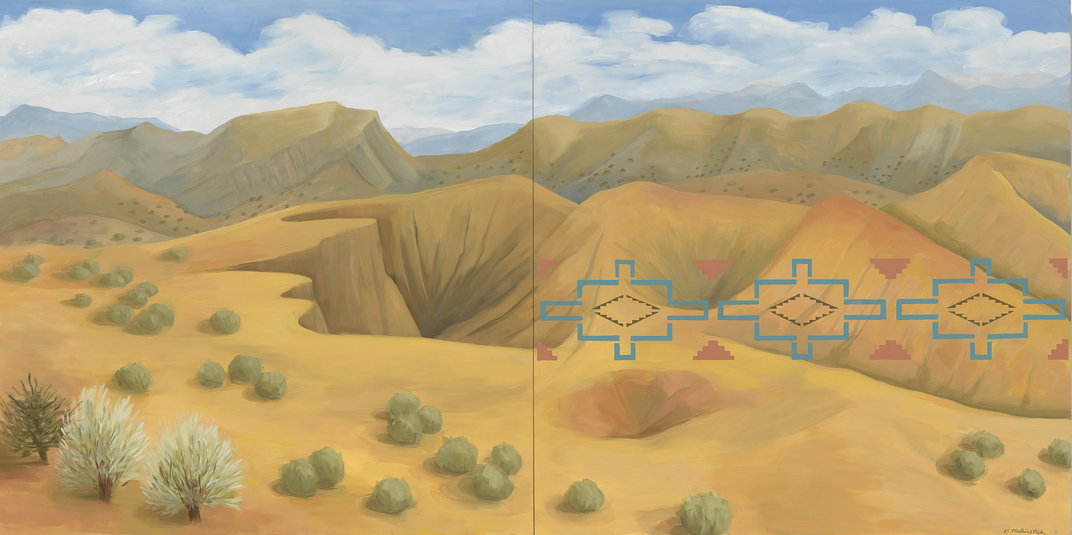
This talk, presented by museum curator Rebecca Head Trautmann, considers the significance of landscape, place, and narrative in the abstract paintings of three women featured in the exhibition Stretching the Canvas: Eight Decades of Native Painting: Jaune Quick-to-See Smith (Salish/Cree/Shoshone), Kay WalkingStick (Cherokee Nation of Oklahoma), and Emmi Whitehorse (Navajo).
Rethinking the Landscape: Haudenosaunee Women
Thursday, March 12, at 6 p.m & Friday, March 13, from 10 a.m. to 4 p.m. at the museum in New York
The museum in Lower Manhattan hosts the International Coalition of Sites of Conscience for two days of programs that explore how to remember, acknowledge, and think about the presence of Haudenosaunee women in the landscape of western New York. The event begins Thursday evening with panel discussion. On Friday, a daylong workshop is offered to staff and volunteers from museums and historical sites, university students and faculty, and other interested parties. Information and tickets ($30) to the workshop are available from the International Coalition of Sites of Conscience on Eventbrite.
Both programs feature Jolene Rickard (Tuscarora Nation), director of the American Indian and Indigenous Program at Cornell University; Michelle Schenandoah (Oneida Nation), founder and CEO of Rematriation magazine; Dr. Sally Roesch Wagner, a pioneer in Women’s Studies at the university level and editor of the intersectional Women’s Suffrage Anthology; and landscape architect Julia Watson. The events will be facilitated by Linda Norris, global networks programs director at the International Coalition of Sites of Conscience. This program is supported, in part, by public funds from the New York City Department of Cultural Affairs in partnership with the City Council.
Thoughts of Our People from Hearts of Our People
Saturday, March 28, from 2 to 5:30 p.m in the Washington museum’s Rasmuson Theater
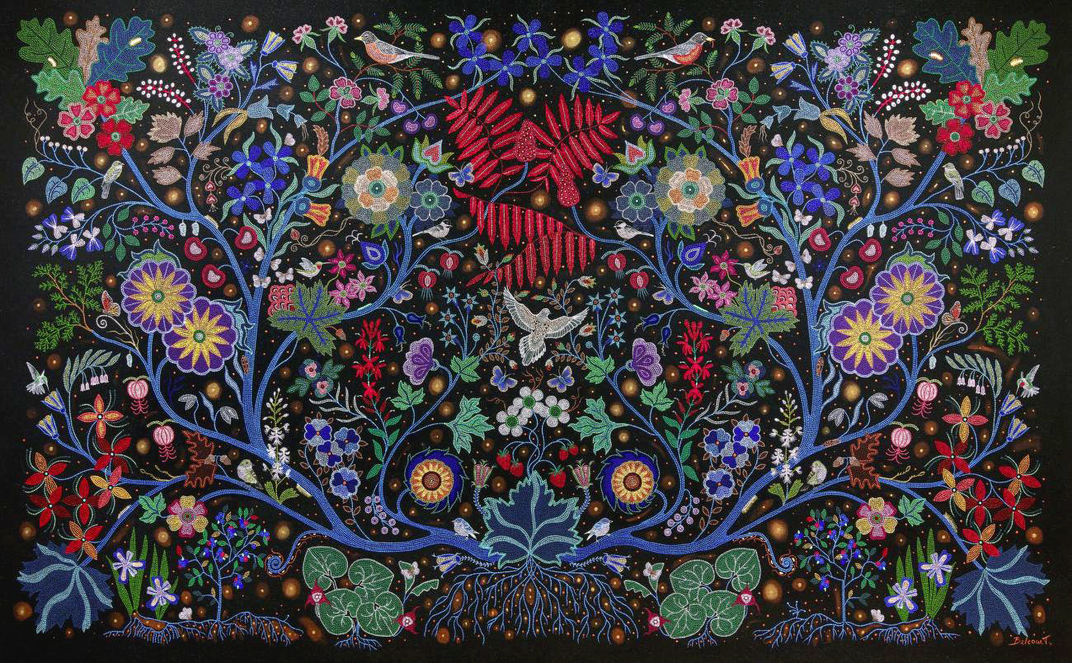
Women have long been the creative force behind Native American art, yet their individual contributions have gone largely unrecognized, treated as anonymous representations of their cultures. The critically acclaimed exhibition Hearts of Our People: Native Women Artists, on view at the Renwick Gallery, explores the artistic achievements of Native women and establishes their rightful place in the art world.
The symposium Thoughts of our People brings together artists Kelly Church (Ottawa/Pottawatomi), Anita Fields (Osage), Carla Hemlock (Kanienkeháka), and Jolene Rickard (Tuscarora) to discuss their work and the role of women as artists in the Native community. Exhibition curators Jill Ahlberg Yohe, associate curator of Native American Art at the Minneapolis Institute of Art, and Teri Greeves, an independent curator and member of the Kiowa Nation, moderate a panel discussion following the artists’ talks.
Thoughts of Our People is organized in collaboration with the Smithsonian American Art Museum. Hearts of Our People at the Renwick Gallery is organized in collaboration with the National Museum of the American Indian. Generous support has been provided by Jacqueline B. Mars, the Provost of the Smithsonian, and the Smithsonian American Women’s History Initiative.
ALSO IN MARCH
Developing Stories: Native Photographers in the Field
Opening Tuesday, March 24, at 10 a.m. at the museum in Washington and New York
Native Americans’ relationship to photography is steeped in colonialism and its legacies. Yet today increasing numbers of professional Native photographers, deeply aware of this history’s social toll, have embraced photography as a medium of empowerment. Developing Stories: Native Photographers in the Field presents photo essays created by photojournalists Russel Albert Daniels (Diné descent and Ho-Chunk descent) and Tailyr Irvine (Salish and Kootenai).
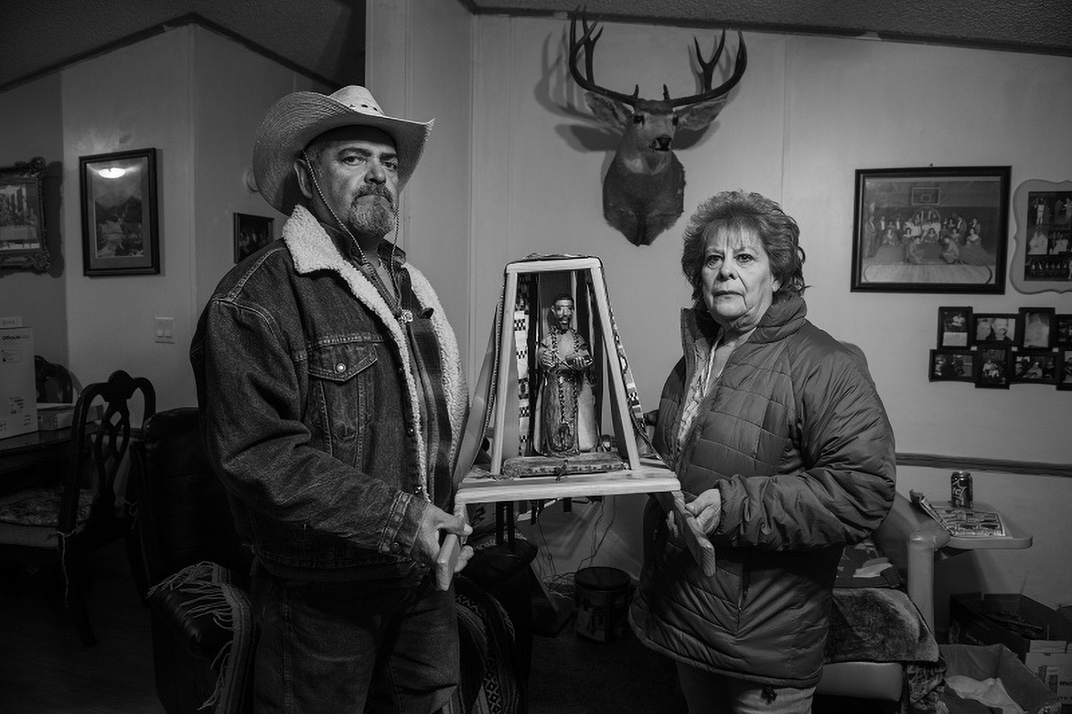
The series begins with Daniels’s Genízario Pueblo de Abiquiú, on view in Washignton and New York through July 6. In photographs and text, Daniels explores northern New Mexico’s Genízario community, a people whose historic experience of violence, slavery, and resilience shapes their sense of self to this day.
Reservation Mathematics: Navigating Love in Native America by Tailyr Irvine examines the legacy of U.S. government regulations affecting Native Americans’ most personal decisions. Specifically, she focuses on the challenge blood quantum requirements pose for young Native American couples who want children and want them to be enrolled in their tribe. It will be on view at both venues from July 14 through October 18.
Photographer’s Talk
Tuesday, March 24, at 3:30 p.m. at the museum in Washington
Thursday, March 26, at 6 p.m. at the museum in New York
Russel Daniels (Diné descent and Ho-Chunk descent) and curator Cécile Ganteaume lead a conversation and gallery tour highlighting Daniels’s Genízario Pueblo de Abiquiú, the first photo essay in the exhibition series Developing Stories: Native Photographers in the Field.
All programs are free and open to the public unless otherwise noted. Check the calendar links for any updates. This calendar of events was compiled by Rosario Bibiano-Garcia of the New York museum’s Communications Office.
About the Museum
In partnership with Native peoples and their allies, the National Museum of the American Indian fosters a richer shared human experience through a more informed understanding of Native peoples. The museum in Washington, D.C., is located on the National Mall at Fourth Street and Independence Avenue S.W. and is open every day from 10 a.m. to 5:30 p.m. The National Museum of the American Indian George Gustav Heye Center is located at One Bowling Green in New York City and is open every day from 10 a.m. to 5 p.m., Thursdays to 8 p.m. Both venues are closed December 25.
For more information, visit AmericanIndian.si.edu. Follow the museum via Facebook, Instagram, and Twitter in New York and Washington.
